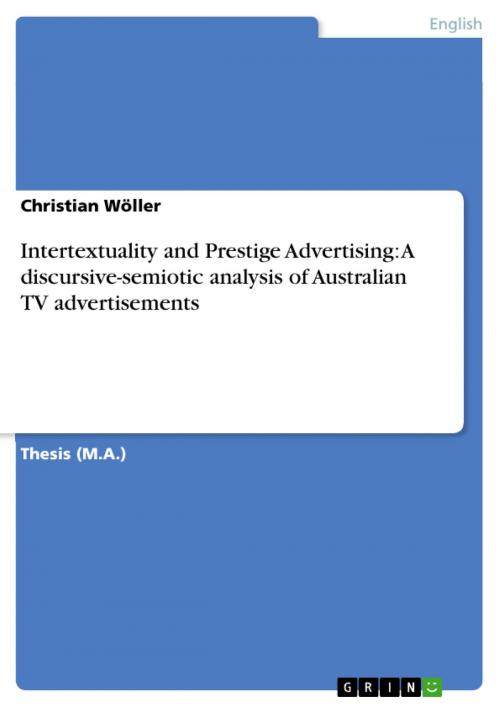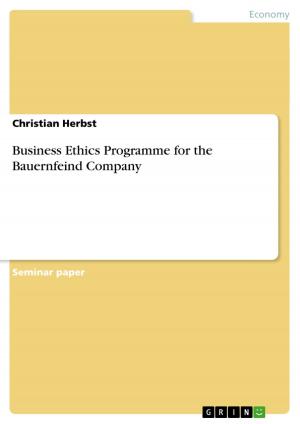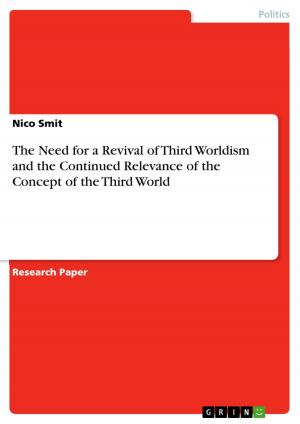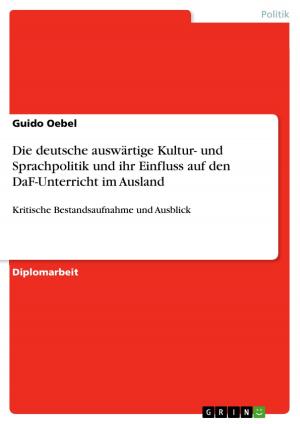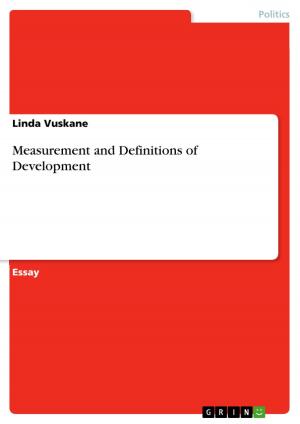Intertextuality and Prestige Advertising: A discursive-semiotic analysis of Australian TV advertisements
Nonfiction, Entertainment, Drama, Anthologies| Author: | Christian Wöller | ISBN: | 9783638104647 |
| Publisher: | GRIN Publishing | Publication: | November 20, 2001 |
| Imprint: | GRIN Publishing | Language: | English |
| Author: | Christian Wöller |
| ISBN: | 9783638104647 |
| Publisher: | GRIN Publishing |
| Publication: | November 20, 2001 |
| Imprint: | GRIN Publishing |
| Language: | English |
Thesis (M.A.) from the year 2001 in the subject English Language and Literature Studies - Linguistics, grade: 1.7 (A-), LMU Munich (Institute for English Philology), 50 entries in the bibliography, language: English, abstract: Introduction 1.1. Foreword Intertextuality is a term that has often been discussed in the linguistic analysis of literature texts. More recently it has become a popular term in media research, especially the analysis of advertisements. But what about Intersemioticity? Intersemioticity is a term that was coined only recently by Lipka (personal note). Like intertextuality, it deals with the relationship of texts to each other but refers not only to textual and verbal messages but also to non-verbal information such as pictures or sounds. It can simply be seen as a web of references that link the textual, visual and aural elements of a primary message with textual, visual and aural elements from other messages. Even the interaction of semiotic modes within a message marks a form of intertextuality which can be referred to as intra-semioticity. In modern TV advertising, both intra- and intersemioticity play an important role as visual and verbal information continually overlap each other and consequently can no longer be defined as independent referential systems. Prestige is a relatively broad term that, according to the Cambridge Online Dictionary (dictionary.cambridge.org/), is used to refer to the 'respect and admiration given to someone or something, usually because of a reputation for high quality, success or social influence'. In advertising, it is often associated with luxurious goods or prestige items such as expensive cars or watches but also with personal prestige. Celebrated public characters often advertise for a product, which enhances the value of both the product and sometimes the celebrity. In a more cultural context, prestige refers to the respect and admiration that is given to a cultural group because of its positive values and qualities. In the opinion of most Australians, Australian culture stands for: friendliness, liberal thinking, personal independence, naturalness, openness, good humour, sportsmanship, nature loving and national pride. Advertisers who wish to boost the sales of an Australian product to Australian consumers often address their target group by making references to these highly estimated 'national characteristics'. [...]
Thesis (M.A.) from the year 2001 in the subject English Language and Literature Studies - Linguistics, grade: 1.7 (A-), LMU Munich (Institute for English Philology), 50 entries in the bibliography, language: English, abstract: Introduction 1.1. Foreword Intertextuality is a term that has often been discussed in the linguistic analysis of literature texts. More recently it has become a popular term in media research, especially the analysis of advertisements. But what about Intersemioticity? Intersemioticity is a term that was coined only recently by Lipka (personal note). Like intertextuality, it deals with the relationship of texts to each other but refers not only to textual and verbal messages but also to non-verbal information such as pictures or sounds. It can simply be seen as a web of references that link the textual, visual and aural elements of a primary message with textual, visual and aural elements from other messages. Even the interaction of semiotic modes within a message marks a form of intertextuality which can be referred to as intra-semioticity. In modern TV advertising, both intra- and intersemioticity play an important role as visual and verbal information continually overlap each other and consequently can no longer be defined as independent referential systems. Prestige is a relatively broad term that, according to the Cambridge Online Dictionary (dictionary.cambridge.org/), is used to refer to the 'respect and admiration given to someone or something, usually because of a reputation for high quality, success or social influence'. In advertising, it is often associated with luxurious goods or prestige items such as expensive cars or watches but also with personal prestige. Celebrated public characters often advertise for a product, which enhances the value of both the product and sometimes the celebrity. In a more cultural context, prestige refers to the respect and admiration that is given to a cultural group because of its positive values and qualities. In the opinion of most Australians, Australian culture stands for: friendliness, liberal thinking, personal independence, naturalness, openness, good humour, sportsmanship, nature loving and national pride. Advertisers who wish to boost the sales of an Australian product to Australian consumers often address their target group by making references to these highly estimated 'national characteristics'. [...]
